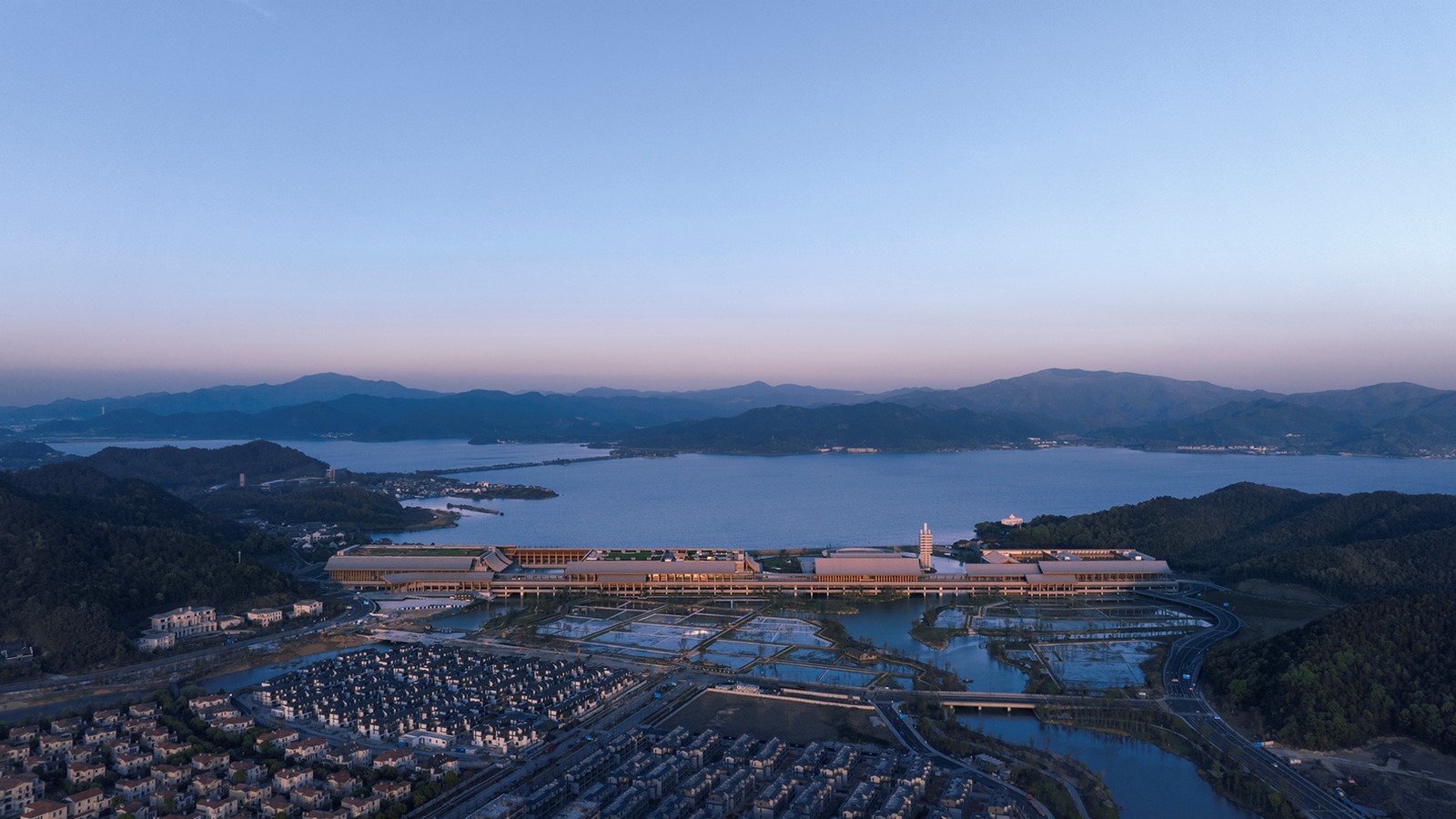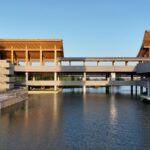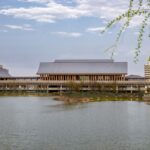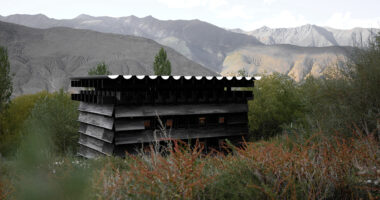Introduction
In Ningbo, China, Tanghua Architect & Associates has brought to life a visionary conference center designed as a covered bridge, seamlessly blending with the picturesque mountain and river landscapes. This architectural marvel not only serves as a venue for government and business affairs but also symbolizes national culture and fosters connections between Ningbo and the global community.

Embracing Nature
Nestled within the Dongqian Lake Scenic Area, the conference center harmonizes with its natural surroundings, spanning approximately 49 hectares. Tanghua Architects prioritized ecological conservation, preserving the site’s topography, water system, and ecosystem. By integrating the building into a north-south belt-shaped area, they safeguarded 36.7 hectares of agricultural landscape, promoting a symbiotic relationship between the city and the countryside.


Program and Design
Divided into four areas, the covered bridge houses various functions, including multi-purpose halls, venues, banquet halls, and a summit area, alongside a five-star hotel. Small-scale streets and commercial settlements line the waterways, creating a vibrant urban scene reminiscent of a Jiangnan scroll painting. The structure’s elevated design enables three-dimensional traffic flow, seamlessly connecting with the city road at different heights.

Multi-Functional Space
Beyond its architectural prowess, the covered bridge serves as a multi-functional public space, offering shelter and scenic views. Visitors can rest, communicate, and enjoy the surroundings, transforming the bridge into an iconic market and settlement reminiscent of Jiangnan water towns. This unique feature fosters educational opportunities, blending local culture, history, and science.

Environmental Sustainability
Environmental conservation is central to the design, with a focus on energy efficiency and emissions reduction. Employing green roofs and permeable paving materials minimizes rainwater runoff and pollution, while renewable energy sources, such as on-site solar panels and geothermal heat exchange systems, enhance energy conservation. By preserving natural wetlands and integrating cultural tourism with the exhibition industry, the center embodies the region’s rich heritage while embracing modernity.

Conclusion
The Ningbo Cultural Center stands as a testament to architectural innovation and environmental stewardship. By seamlessly blending with its natural surroundings and embracing sustainable design principles, it not only serves as a hub for cultural exchange but also reflects Ningbo’s commitment to a harmonious balance between tradition and progress.























